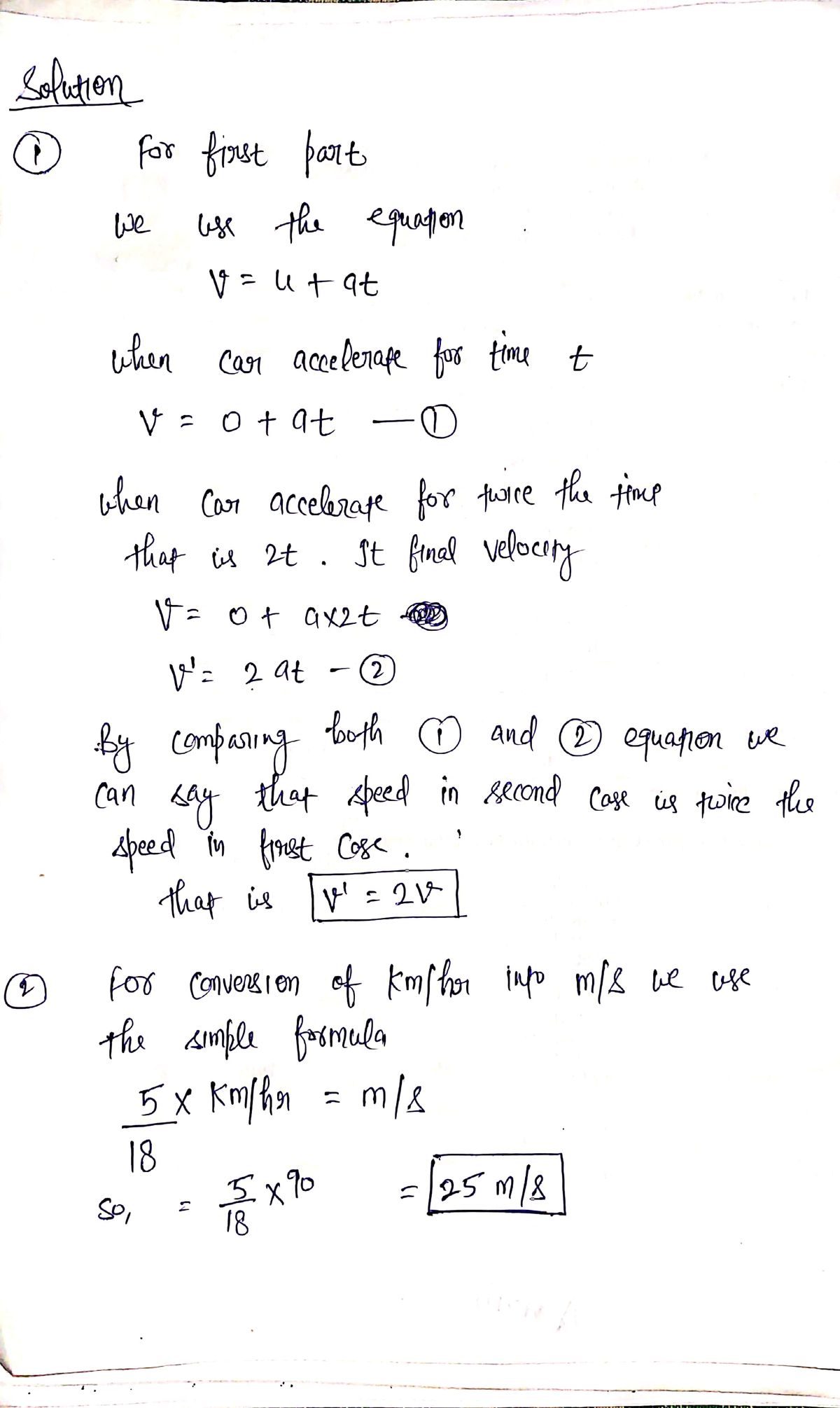acceleration, a, causing it to start moving. It reaches its final velocity, v, after accelerating for a time At. A second car that also starts from rest experiences the same acceleration for twice as much time as the first. What is the second car's final velocity? a) v b) 1/2v c) 2v d) 1/4v e) 4v What is 90 km/hr expressed in m/s? a 25 m/s b) 324 m/s c) 1.5 m/s d) 15 m/s
Displacement, Velocity and Acceleration
In classical mechanics, kinematics deals with the motion of a particle. It deals only with the position, velocity, acceleration, and displacement of a particle. It has no concern about the source of motion.
Linear Displacement
The term "displacement" refers to when something shifts away from its original "location," and "linear" refers to a straight line. As a result, “Linear Displacement” can be described as the movement of an object in a straight line along a single axis, for example, from side to side or up and down. Non-contact sensors such as LVDTs and other linear location sensors can calculate linear displacement. Non-contact sensors such as LVDTs and other linear location sensors can calculate linear displacement. Linear displacement is usually measured in millimeters or inches and may be positive or negative.
Starting from rest, a car experiences an acceleration, a, causing it to start moving. It reaches its
final velocity, v, after accelerating for a time At.
A second car that also starts from rest experiences the same acceleration for twice as much time
as the first. What is the second car's final velocity?
a) v
b) 1/2v
c) 2v
d) 1/4v
e) 4v
What is 90 km/hr expressed in m/s?
a 25 m/s
b) 324 m/s
c) 1.5 m/s
d) 15 m/s

Step by step
Solved in 2 steps with 1 images









